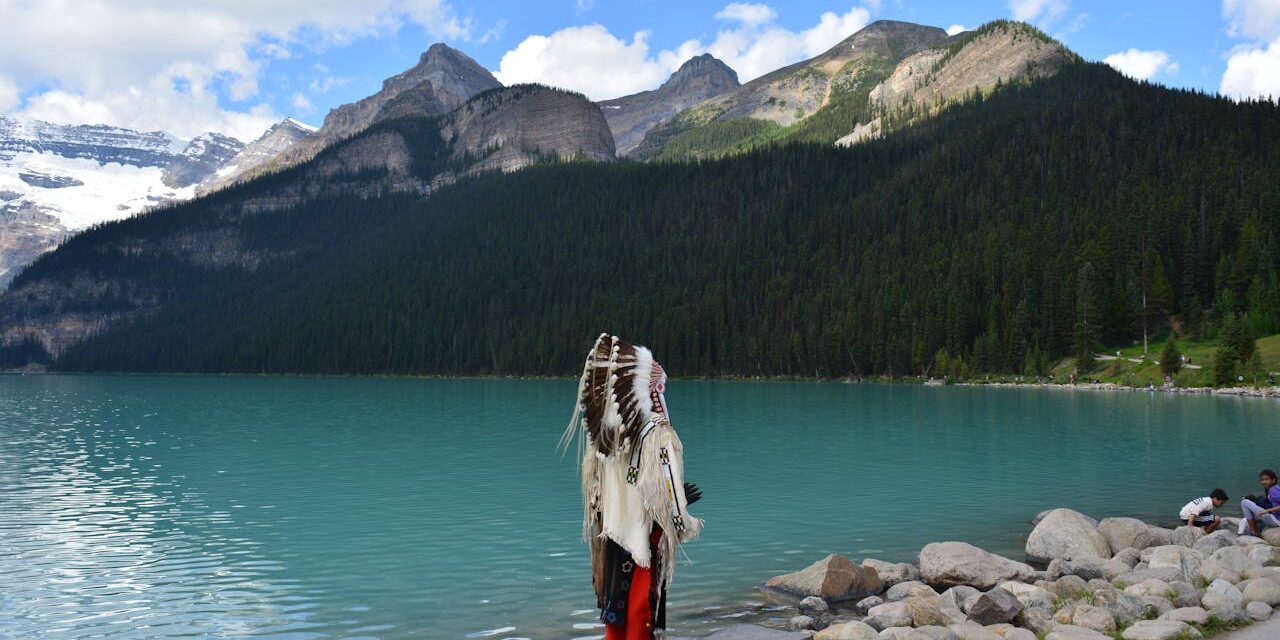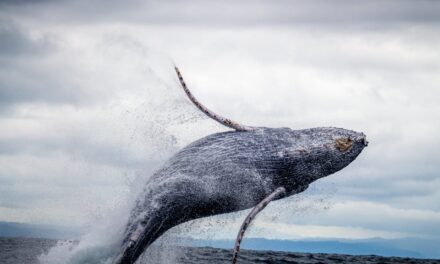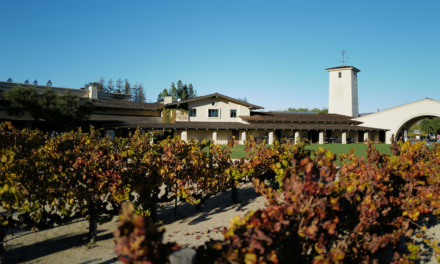The indigenous tribes of North America are incredibly diverse, with distinct cultures, languages, and histories.
For this blog post, we’ll categorize them alphabetically by region, providing a brief overview of each tribe’s unique characteristics and contributions.
Table of Contents
Arctic Region
Aleut
Aleut: The Aleut inhabit the Aleutian Islands, Pribilof Islands, as well as the western portion of the Alaska Peninsula. Known for their skills in fishing and hunting sea mammals, the Aleut people have a rich tradition of craftsmanship, particularly in creating intricate tools and clothing from natural materials.
Inuit
Inuit: The Inuit live in Alaska, Canada, and Greenland. They are famous for their igloos, kayaks, and umiaks (large open boats). They have a very profound and deep draw and connection to the Arctic environment and are known for their hunting skills, particularly in ice-covered regions.
Inupiat
Inupiat: The Inupiat live in northern Alaska. Their culture revolves around hunting marine mammals like whales and seals. They have a strong community-oriented society with rich oral traditions and storytelling.
Subarctic Region
Cree
Cree: Found across Canada and the northern United States. The Cree are known for their extensive use of birchbark canoes and their ability to adapt to harsh subarctic environments. They have a vibrant cultural heritage, including traditional music and art.
Dene
Dene: Spread across Canada’s Northwest Territories, Yukon, and northern British Columbia. The Dene people are skilled hunters and fishers, with a deep spiritual connection to the land. Their oral traditions and languages are central to their cultural identity.
Athabaskan
Athabaskan: The Athabaskan inhabit interior Alaska and northwestern Canada. They are renowned for their subsistence lifestyle, which relies heavily on hunting, fishing, and gathering. Their intricate beadwork and quillwork are highly regarded.
Northeast Region
Iroquois Confederacy
Iroquois Confederacy (Haudenosaunee): Includes the Mohawk, Oneida, Onondaga, Cayuga, Seneca, and Tuscarora nations. Known for their sophisticated political system and longhouses, the Iroquois played a significant role in the early history of the United States and Canada.
Algonquin
Algonquin: Occupy parts of Canada and the northeastern United States. The Algonquin people are known for their skills in canoeing, fishing, and hunting. They have a rich tradition of storytelling and a deep spiritual connection to the land.
Pequot
Pequot: Originally from Connecticut. The Pequot were heavily involved in trade and had a complex society. They are known for their resistance during the Pequot War of 1637.
Wampanoag
Wampanoag: The Wampanoag inhabit southeastern Massachusetts and eastern Rhode Island. They are known for their role in the Thanksgiving story and their rich history of farming, fishing, and hunting.
Southeast Region
Cherokee
Cherokee: Historically settled in the southeastern United States. The Cherokee are known for their development of a written syllabary by Sequoyah and their tragic forced relocation during the Trail of Tears.
Seminole
Seminole: Seminoles primarily reside in Florida. They are known for their resistance against removal in the Seminole Wars and their vibrant culture, including patchwork clothing and the Green Corn Ceremony.
Chickasaw
Chickasaw: Originally from the southeastern United States, the Chickasaw are known for their fierce warriors and strategic trading practices. They played a huge role in the region’s early history.
Creek
Creek (Muscogee): The Creek inhabit parts of Alabama, Georgia, and Florida. They are known for their complex social structure and significant role in the history of the southeastern United States.
Great Plains Region
Sioux
Sioux: This group comprises the Dakota, Nakota, and Lakota nations, which are spread across the Dakotas, Minnesota, and Nebraska. The Sioux are renowned for their horse culture, buffalo hunting, and iconic tipi dwellings.
Cheyenne
Cheyenne: The Cheyenne inhabit the Great Plains, including parts of Montana and Oklahoma. They are known for their warrior society, intricate beadwork, and strong cultural traditions.
Comanche
Comanche: Originally part of the Shoshone, the Comanche moved to the southern Plains. They became skilled horsemen and fierce warriors, playing a dominant role in the region’s history.
Kiowa
Kiowa: Reside in Oklahoma and parts of Texas. The Kiowa are known for their rich oral traditions, distinctive art, and involvement in the buffalo culture.
Southwest Region
Navajo
Navajo: The Navajo live in the southwestern United States, primarily in Arizona, Utah, and New Mexico. They are known for their weaving, silversmithing, and the famous and noted Navajo Code Talkers of World War II.
Apache
Apache: This includes several groups, such as the Mescalero, Chiricahua, and Western Apache. They are known for their guerrilla warfare tactics and resistance against Spanish, Mexican, and American forces.
Hopi
Hopi: The Hopi live in northeastern Arizona. They are known for their agricultural practices, kachina dolls, and intricate pottery. Their villages are some of the oldest continuously inhabited settlements in the United States.
Zuni
Zuni: Reside in western New Mexico. The Zuni are known for their unique language, intricate silver jewelry, and vibrant ceremonies.
Northwest Coast Region
Haida
Haida: The Haida Gwaii inhabit the archipelago off the coast of British Columbia. They are renowned for their woodworking, particularly totem poles and canoes.
Tlingit
Tlingit: Reside in southeastern Alaska. The Tlingit people are known for their complex social structure, clan system, and highly developed art forms, including weaving and carving.
Kwakiutl
Kwakiutl: Live along the coast of British Columbia. They are famous for their potlatch ceremonies and elaborate masks and totem poles.
Nuu-chah-nulth
Nuu-chah-nulth: The Nuu-chah-nulth people live on the west coast of Vancouver Island. They are known for their whaling traditions and intricate art forms.
California Region
Chumash
Chumash: Inhabit coastal California. The Chumash are known for their plank canoes, called tomols, which they used for fishing and trade.
Miwok
Miwok: The Miwok people live in northern California. They are known for their basket weaving and complex social and political structures.
Pomo
Pomo: They live in northern California. The Pomo are renowned for their intricate basketry, considered some of the finest in the world.
Yurok
Yurok: Reside along the Klamath River in northern California. The Yurok are known for their fishing skills, particularly in catching salmon.
Great Basin Region
Shoshone
Shoshone: The Shoshone inhabit the Great Basin region, including Nevada, Utah, and Idaho. They are known for their nomadic lifestyle, skilled hunting, and rich oral traditions.
Paiute
Paiute: The Paiutes reside in the Great Basin and parts of California. They are known for their basketry, beadwork, and adaptability to the harsh desert environment.
Ute
Ute: The Ute people inhabit Colorado and Utah. They are known for their horse culture, beadwork, and strong warrior traditions.
Plateau Region
Nez Perce
Nez Perce: The Nez Perce reside in the Pacific Northwest. They are known for their horse breeding, particularly the Appaloosa, and their resistance during the Nez Perce War of 1877.
Spokane
Spokane: Live in eastern Washington. The Spokane people are known for their fishing skills, particularly salmon, and their intricate beadwork and basketry.
Klamath
Klamath: The Klamath people live in southern Oregon and northern California. They are known for their fishing, basketry, and complex social structures.
Fun Things to Do Related to Indigenous Cultures
Visit Cultural Centers and Museums
- National Museum of the American Indian: Located in Washington, D.C., and New York, these museums offer extensive exhibits on Indigenous cultures and histories.
- Heard Museum: In Phoenix, Arizona, this museum features exhibits on Native American art and culture.
Attend Powwows and Cultural Events
- Gathering of Nations: Held in Albuquerque, New Mexico, it is one of the largest powwows in North America.
- Stanford Powwow: This annual event, held at Stanford University, celebrates Indigenous cultures through dance, music, and art.
Explore Historic Sites and Reservations
- Navajo Nation: Visit Monument Valley, Canyon de Chelly, and the Navajo Nation Museum.
- Taos Pueblo: A UNESCO World Heritage site displaying the traditional Pueblo way of life in New Mexico.
Q&A: Common Questions about Indigenous Tribes
Q: What are some traditional foods of Indigenous tribes?
A: Traditional foods vary widely but include corn, beans, squash, bison, salmon, wild rice, and various fruits and nuts.
Q: How are Indigenous languages being preserved today?
A: Efforts include language immersion programs, educational initiatives, and the use of digital media to teach and preserve languages.
Q: What are some famous Indigenous landmarks to visit?
A: Landmarks include the Crazy Horse Memorial in South Dakota, which honors the Lakota leader and Native American history; Mesa Verde National Park in Colorado, known for its well-preserved Ancestral Puebloan cliff dwellings; and Chaco Culture National Historical Park in New Mexico, which features the ruins of the Chacoan civilization.
Q: How can non-Indigenous people learn about and engage with Indigenous cultures respectfully?
A: Non-Indigenous people can learn about Indigenous cultures by visiting cultural centers and museums, attending powwows and other cultural events, reading books and articles written by Indigenous authors, and engaging with Indigenous-led educational programs.
It’s important to approach these experiences with respect, openness, and a true and genuine willingness to listen and learn.
Q: What roles do Indigenous tribes play in modern environmental conservation efforts?
A: Many Indigenous tribes are at the forefront of environmental conservation efforts, drawing on their traditional ecological knowledge. They often work to protect natural resources, preserve biodiversity, and combat climate change. Examples include the Standing Rock Sioux Tribe’s opposition to the Dakota Access Pipeline and the Haida Nation’s efforts to conserve marine ecosystems.





